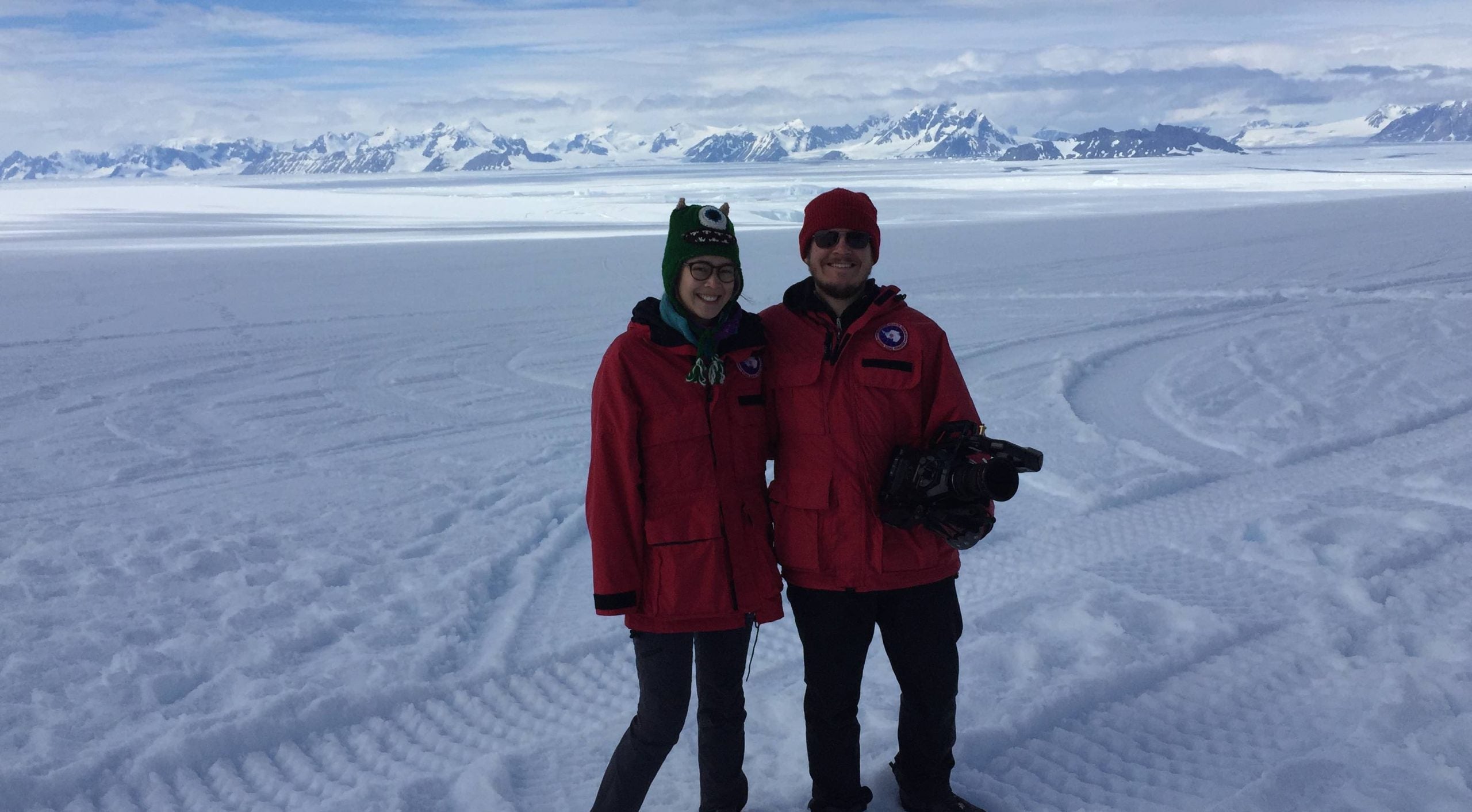Today’s post is contributed by Greta Shum, who is part of the multimedia team on our cruise.
It’s the Adventures of Sherlock Holmes. That’s what it’s called. Not The Adventures of Sherlock Holmes and Watson.
But I am on an adventure, following after this detective as he teases out the mysteries of the Southern Ocean. Except in this case, there are about 20 detectives and two of us—the outreach crew.
Each day aboard the N. B. Palmer, Ted and I (the outreach crew of two) wake up and try to capture another part of the story. If you think about it, there are a few stories going on here.
For one thing, there’s the (hi)story of the Southern Ocean and Antarctica. And that story is everywhere. It’s between the lines when people talk about the honking power of this 304-foot ice-breaking vessel. It’s in the way people mutter to each other when they pass through particularly old and strong ice, our hull busting through the thick protective boundary that kept humans out of the continent for so long. It’s in the names students back on land choose to call the instruments we’re deploying into the water. Let me clarify— the scientists on the Palmer partnered with a few elementary, middle, and high school classrooms back on land in the U.S. The shore-side students can use the data collected on the boat to learn about things like the carbon cycle, ocean currents, and chemistry. They in turn help out the scientists by choosing names for the SOCCOM (Southern Ocean Carbon and Climate Observations and Modeling) floats. Three of those names have been Antarctic heroes—Byrd, Scott, and Shackleton.
The harshness of this climate is evident simply in the clothing we wear: our Carhartts, our Big Reds, our steel-toed boots. And when the scientists bundle up and gingerly crack the water-locked doors, climbing out onto the bow of the ship, gritting their teeth through the sharp wind chill, they feel the same wind that the first adventurers did when they put the first footsteps on Antarctic snow—not long ago.
For another thing, there’s the story of the science I’m sure you keep hearing about. We’ve got three science teams aboard the Palmer—a physical oceanography team measuring currents in the Amundsen Sea, a microbiology and experimental evolution team studying diatoms in the Southern Ocean and their potential for evolution, and a biogeochemical float team deploying autonomous floats into the Southern Ocean to measure carbon and climate change. So that’s current, microbes, and climate change for our characters!
These projects have longer timelines than just the life of this cruise, but they’re of course shorter than the history of humans in Antarctica. Our 27 days on the ship are just a snapshot in the long reel of hypotheses, data collection, analyses, and conclusions. But sometimes looking through just the porthole can give you a sense of the horizon. That’s what this cruise is to us—a little snapshot of the science. We’ll bring our photos, video footage, and notebooks home, and from that we’ll build something of a porthole (or should that be “portal”) for those of us who spend our lives on land to look through—and see the grand horizon of these science projects.
The most compelling story is the cruise itself. When we set sail from Punta Arenas, we were cracking the spine of a brand new book. Every page was crisp, and we noticed the smell of the leaves, the font, the size of the text, the colors. But halfway through the cruise, our hands were used to holding the book. We knew the characters. We were cheering for them! We may have even recounted bits and pieces of the story to others (by this I mean of course writing emails to friends, calling home on the iridium satellite phone, or even posting a blog). And as with any good book, we dreaded the end!
Our scientists have finished their work and are now packing up instruments in boxes, tying them down with ratchet straps and bungie cords. Each moment is sweet, but each one brings you closer to the end. The only solution is to spread the word! Tell others to read the story, and through then they’ll be plunged into a world of science, a world of Antarctic lore, and maybe too the inspiration to write their own tale!
Watson chronicles the adventures of Sherlock Holmes, but if you’ve read his stories, you know that Watson is just as much of a mystery buff as Holmes. But Watson’s personal mystery is just …Holmes—the man, the hero, the mystery. When we boarded the Palmer on Christmas Eve, our scientists were on the hunt to find answers to their biological, physical, and chemical questions. And we were close behind—carrying our own particular breeds of microscopes and floats.
Read Greta’s blog at SOCCOMatSea.blogspot.com or email her at gshum@climatecentral.org to get involved with the Adopt-A-Float Program!

